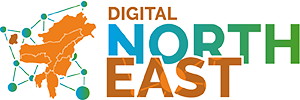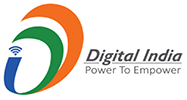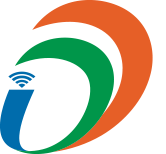About Arunachal Pradesh
“Land of Dawn-Lit Mountains” is a state in Northeast India, Arunachal, the name means “land of rising sun”, is located between 28.2180° N, 94.7278° E. As of the 2011 Census of India, Arunachal Pradesh has a population of 1,382,611 and an area of 83,743 square kilometres (32,333 sq mi) is scattered over 26 towns and 3863 villages It is an ethnically diverse state, with predominantly Monpa people in the west, Tani people in the center, Tai people in the east, and Naga people in the south of the state.
It borders the states of Assam and Nagaland to the south. It has a long international border with Bhutan to the west (160km), China to the north and north-east (1,080 km) and Myanmar to the east (440km). It stretches from snow-capped mountains in the north to the plains of Brahmaputra valley in the south. Arunachal is the largest state area wise in the north-eastern region, even larger than Assam which is the most populous.
Largest State (area wise) in North-East India
- Geographical Area: 83,743 km²
- Districts: 25
- Population: 1.255 million (2012)
- Capital: Itanagar
- Eastern Himalayan Zone of India (Tropical, Sub-tropical and Temperate agro-climatic zones)
Prime Focus
- Enhancing the production and productivity of farm and empowerment of the registered farmers by providing evidence based agro-advisory services generated by UAV data through IIDS platform.
- Economic development of the farmers of Arunachal Pradesh
Implementing Partners
- College of Horti. and Forestry, CAU, Pasighat, Arunachal Pradesh
- Central Agricultural University (Imphal),
- Digital India Corporation (DIC), New Delhi
Proposed Information Services for Farmer
Broad area of evidence-based agro-advisory services include:
- Detail geotagged farm information apropos of field slope, source of water for irrigation, soil organic matter, and soil H2O, N & P content etc.
- Near real time précised Agro-Advisory Services generated by UAV data through IIDS 2.0 platform w.r.t. crop stress – diseases, insects, weed control measures and nutrient deficiencies.
- Quantification of stressed plants in farmers’ field, its location and its critical strategies for amelioration.
- Mitigative and adaptive measures in crop production after extreme weather events / natural calamities.
- Need-based demonstration, training and sensitization on scientific package of practices of crops.
- Yield forecasting of crops and identification of appropriate harvesting time.
- Market Linkage of farm produce.
Name of the Location/Districts to be covered
- East Siang, Head Quarter- Pasighat
- Lower Dibang Valley, Head Quarter- Roing
- Namsai, Head Quarter- Namsai
- Siang, Head Quarter- Boleng
- Upper Siang, Head Quarter- Yingkiong
- West Siang, Head Quarter- Along
- Lepa Rada, Head Quarter- Basar
- Shi-Yomi, Head Quarter- Tato
- Lower Siang, Head Quarter- Lekhabali
Agriculture to be catered through IIDS (Mobile Based Advisories)
Information on horticulture, agriculture, animal husbandry and fishery.
Number of Farmers to be registered with detailed farm information
Number of Farmers - 1500 (In First Year)
Types of Problem (Broad Category)
- Lack of organize agricultural marketing and storage facility.
- Unpredictable climatic conditions
- Inadequate irrigation facilities
- Traditional /shifting methods of cultivation
- Animal (Mithun) disturbances
- Lack of awareness and education
- Manpower
- Lack of mechanization
- Scarcity of capital
- Non availability of quality planting materials/ seeds
- Free ranging of livestock
- Lack of quality seeds and planting materials
Common Insects & Diseases in each Category
Agriculture:
- Ginger (Disease - Rhizome rot etc.)
- Citrus (Insects - Citrus trunk borer, Fruit sucking moth, Citrus leaf miner, citrus psylla, lemon butterflies, Mealy Bug, Fruit fly, Scale Insect etc.
Disease - Canker etc.)
- Large cardamom (Disease - Mosaic etc.)
- Tomato (Disease - Damping off etc.)
- Cabbage (Disease - Cauliflower mosaic etc.)
- Mushroom (Disease - Bacterial rot etc.)
- Rice (Insects - Stem borer, leaf folder, gundhibug, brown hopper, rice aphid etc.
Disease - Tungro virus, Blast, Bacterial Leaf Blight, Brown spot, false smut, sheath rot etc.)
- Maize (Insects - Stem borer, cob borer, aphid, fall army worm etc.
Disease - Turcicum leaf blight, maize rust, Northern leaf blight etc.)
- Millet (Disease - Seedling blight, blast etc.)
Animal husbandry
- Cattle (Disease - Foot and Mouth Disease, Mastitis, Endo and Ecto parasitic Infestation etc.)
- Pig (Disease - Swine Fever, Exudative Dermatitis, Endo and Ecto parasitic Infestation, Colibacillosis, Swine dysentery etc.)
- Goat (Disease - PPR, Brucellosis, Salmonellosis etc.)
- Poultry (Disease - Ranikhet, Infectious Bursal Disease (IBD), Coccidiosis, Infectious Coryza, Chronic Respiratory Diseases etc.)
Fishery:
Epizootic Ulcerative Syndrome, Argulus, Myxobolus, Fin-rot, Dropsy, Hemorrhagic septicemia, environmental nature.
Current Status of Extension
Extension is being carried out mainly by non-digital way.
Need for Evidence Based Agro-Advisory Services through IIDS 2.0 and its Benefits to the Farmers
The use of Mobile Based Advisory integrated data on smallholder farms will allow for highly tailored advice on planting, irrigation, suitable farm mechanization, and harvesting times for crops, the selection of the most appropriate farm inputs like seeds, fertilizers, and pesticides/herbicides, and forward-looking farm planning that considers precise (and dynamically updated) estimates of crop yields and market conditions.
Need for Evidence Based Agro-Advisory Services through IIDS 2.0 to Subject Matter Specialists
Dissemination of information about recent technologies in the field of agriculture, horticulture, farm mechanization, fishery and animal husbandry and the problems face by farmers will help the scientists and SMSs and line department officers to deliver right thing to the farmers and policy makers.
Training and Workshops to be held in 3 years
Number of Trainings and Workshops – 80
Methodology
Registration of farmers
Each farmer has to register himself/ herself with the assistance of Field Coordinator to get the desired services by providing required details; e.g. agriculture advisory services they need to provide their farm details. Each farmer will get a unique ID number and all the transactions will be recorded in the database.
Registration of Fish Ponds
Details of the fish ponds of the registered farmers to be registered separately. A format will be developed in consultation with other project partners and Digital India Corporation, New Delhi to record the information of the fish ponds. Specific tag number (Identification number) will be provided to the each pond. Whenever the farmer calls for any problems in his fishery farms, he/she will be asked to identify the respective fish ponds with the Tag no. and the expert will come to know the details of the history of the ponds from the system.
Tentative Information regarding Fish Pond to be recorded
- Area
- Depth
- Type (Seasonal/Perennial)
- Existing Culture Practice
- Soil and Water Quality Parameters (Soil texture, planktons, pH, Dissolved Oxygen, Alkanity, Hardness, Organic Matter, NPK etc.
Awareness / Sensitization and Training Programme
To aware the people regarding the project activities, encourage them to take the benefit of project in maximum extent by the beneficiaries, continuous awareness/sensitization programme and need-based training programme for the project farmers will be conducted. Moreover, animal/fish health camps will be organized for the benefit of the farmers in the registered villages.
Delivery of farm advices (Pull Based)
To get the advice/information service the farmers will call to the lab. Farmer’s queries will be answered by the technicians at advisory labs who will also record. If the Level-I expert at the lab is unable to answer the query, he/ she will record the query and transfer to the Subject Matter Specialist (Level-II experts) at the concerned centre of the University and the specialist will answer the query virtually.
Delivery of Information Services (Push Based)
The system will also aggregate location-specific data from various reliable information sources and disseminate it in the form of text and voice messages to the registered users depending on the user’s specified (as mentioned during their registration to the service) time and mode. This information would be aggregated by the system as well as manually by the project staff.






